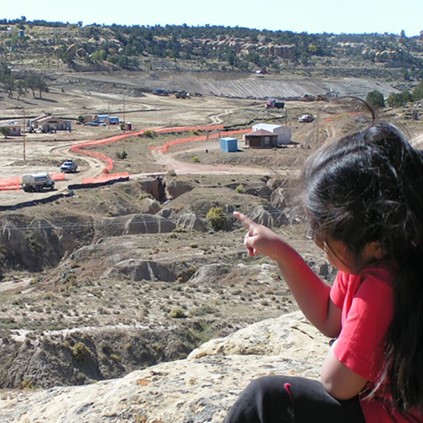Superfund Research Program
September 2023

Johnnye Lewis, director of the University of New Mexico Superfund Research Center, researches the Tribal health implications of exposures to environmental pollutants, particularly those from hardrock mining activity. For decades, hardrock miners excavated Tribal lands for minerals like silver, lead, vanadium, and uranium. They left behind pulverized rock called tailings, which contained heavy metals and other toxic elements. These tailings polluted the local air, water, and soil that Tribal populations rely on for their livelihood.
Lewis led a team of researchers to analyze Tribal water sources for mining contamination and found that water sources near abandoned mines had higher levels of uranium and arsenic. In addition, Lewis’s team found that chronic exposure to mining waste increased the risk of cardiovascular disease, diabetes, and kidney disease. Recently, Lewis and her colleagues started researching pollutants from the burning of household trash by Tribal communities.
To share her findings with Indigenous partners, Lewis works with artists and cultural and language specialists to translate her work for communities. She emphasizes the importance of designing culturally appropriate studies for Indigenous communities and addressing community concerns to give Tribal communities a voice.
To learn more, listen to Lewis’s Global Environmental Health Chat.


